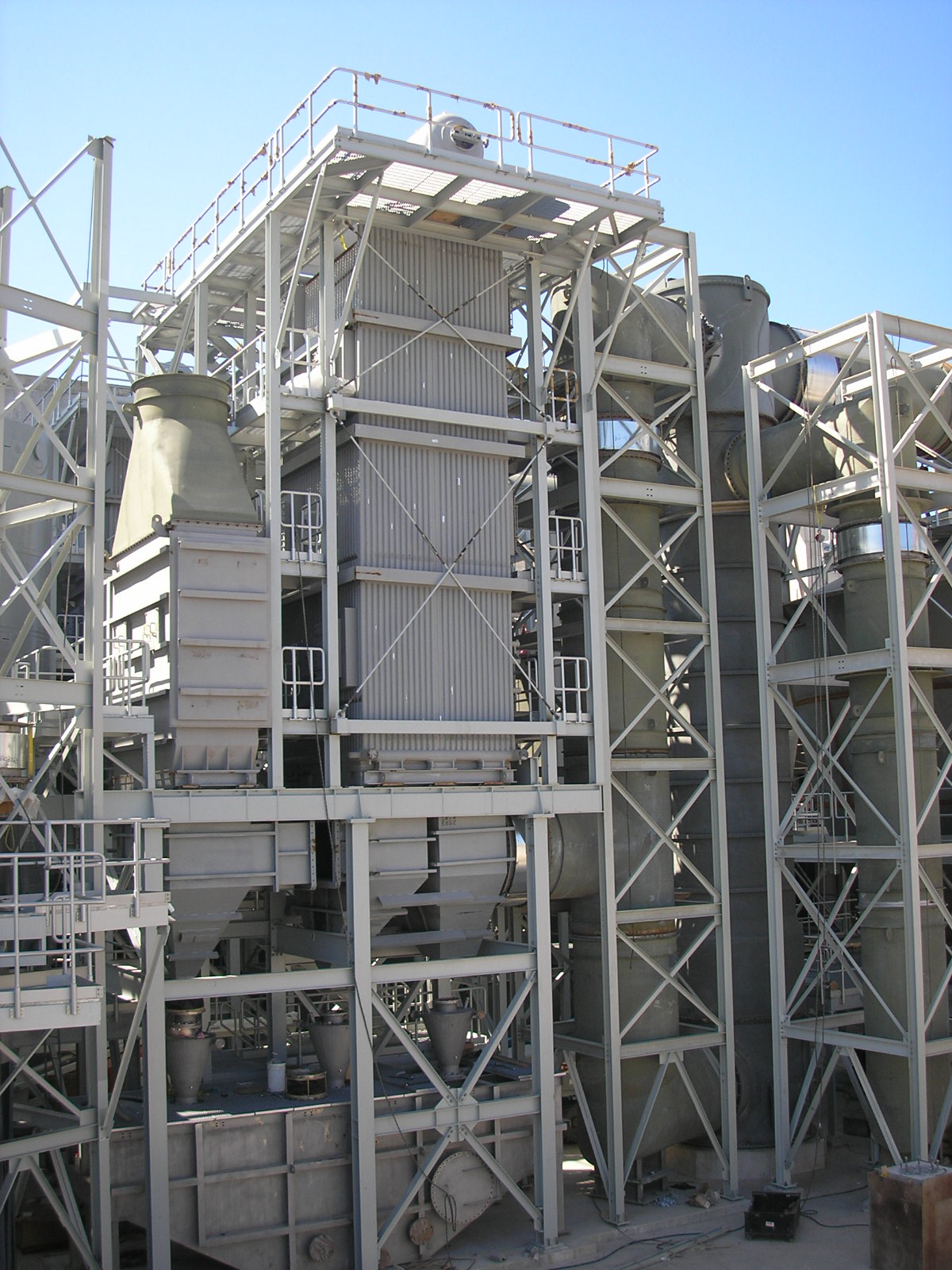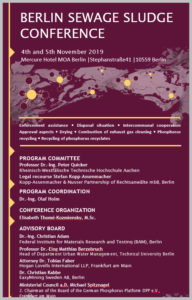WEF Residuals & Biosolids Conference May 6 – 9 in Baltimore, MD
https://www.wef.org/events–education/conferences/RBITT/
WEFTEC Conference September 29 in Chicago
The WEF Residuals & Biosolids Community has scheduled a webcast for April 18th 2024.
Scheduled presenters include staff from U.S. EPA and a Wastewater Consultant.
For additional information you are welcome to contact Peter Brady.
For general information:
Each of the six Fluid Bed Incinerators has a design rating of 83 DT/day.
Typical feed is in the 29% Dry Solids range.
Therefore wet cake feed is in the range of 286 tons of biosolids per day.
There are a total of six FBI, three at the Bissell Point WWTP, and three at the LeMay WWTP.
Provision has been made for future energy recovery.
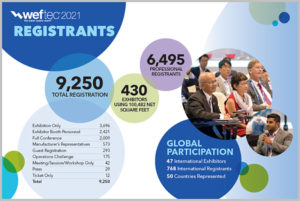
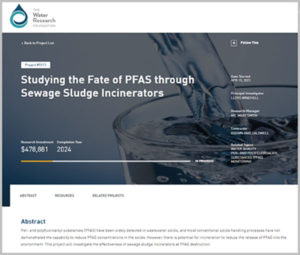
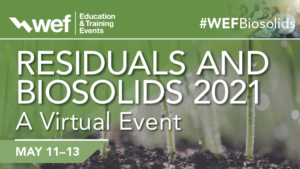
February 2021
SCHMIDTSCHE SCHACK e-Talk – Optimizing heat exchangers in fluid bed incinerationThursday, 25 February 2021 15:00 – 16:00 (CET) / 9am-10am (EST)
Optimized heat recovery and recuperation in thermal processes are contributing an important share to the circular and green economy. Dependable long-term operation, elimination of auxiliary fuel usage and serviceability that allows for extension of equipment life are some of the attributes that make the SCHMIDTSCHE SCHACK heat recovery solutions the industry standard for fluid bed sludge incinerator applications.In our upcoming e-Talk we would like to give a detailed introduction in the clear correlation between proper installation and maintenance and long-term operation of these heat recovery systems. We will explain how we can maximize both performance and life of these high-value components.
Contact Peter Brady for more information
Water Environment Federation
For information;
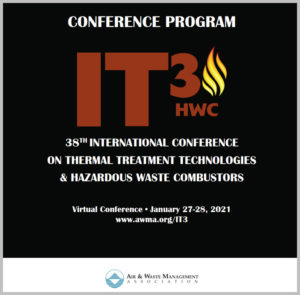
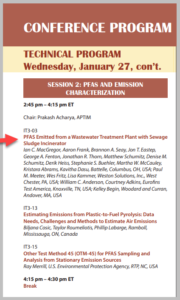
December 2020

Challenge
Per- and polyfluoroalkyl substances (PFAS) are a large class of chemicals that are widely used for many commercial and industrial applications. Some applications include aqueous film forming foams (AFFF), metal plating solutions, plastic molds, photographic films, semiconductors, and textile coatings. During the use and/or disposal of these products, PFAS can be introduced into wastewater treatment plants (WWTPs). Sewage sludge is a byproduct of the treatment of wastewater, and incineration is a common option for the disposal of the sludge. Due to the difficulty in destroying these compounds, it is important to understand their prevalence in WWTP discharge.
Solution
In a first-of-its-kind assessment, Battelle evaluated the extent to which a full-scale WWTP with a collocated sewage sludge incinerator (SSI) disperses PFAS and their degradation byproducts into watersheds and the downwind atmospheric environment. Under typical steady-state conditions at an operational municipal WWTP/SSI, we measured PFAS concentrations in the WWTP’s influent and effluent, the sludge, the effluents from the air pollution control devices, and in the incinerator stack gas. We estimated emission factors for PFAS and other fluorine-containing degradation byproducts in all WWTP/SSI effluent streams, as well as estimated the efficiency with which PFAS is removed and/or destroyed by thermal treatment in a fluidized bed incinerator operating at 830°C. Lastly, we measured PFAS in the ambient air upwind and downwind of the incinerator stack for comparison to concentrations predicted using dispersion modeling.
Over two days Battelle ascertained the steady-state mass admission and discharge rates of the influent and effluent streams at the WWTP/SSI and collected samples of potable water, non-potable water, and solids. In these samples we measured inorganic fluoride by ion chromatography (IC) and target PFAS in our DoD-ELAP accredited laboratory by isotope dilution high performance liquid chromatography tandem mass spectrometry (LC/MS/MS). We also performed flue gas sampling using Modified EPA Method 0010 (for target PFAS), Modified EPA Method 18 (for carbonyl difluoride [COF2] and total fluorine), and EPA Method 26A (for hydrogen fluoride [HF]). PFAS in the ambient air upwind and downwind of the stack was measured with Battelle’s PFAS Air Insight™ technique, which is a modified version of EPA Method TO-13A. Wind speed, direction, and temperature were also captured.
Outcome
For further information please visit the Battelle website at;
EnviroCare is active and engaged in the international market for our wet scrubber products and evaporative cooling technologies. We have several active scrubber projects in Finland and Russia with manufacturing partners in Estonia and Germany. We have pollution control partners headquartered in Germany. We are also very active on wastewater incineration projects in Canada.
Alpine Technology and Partners Exhibited at the 2018 and 2019 Mono Incineration and Phosphorus Recovery Conference
We presented a paper in 2019 on our 20 years experience with sludge incineration projects in North America;
The paper is courtesy of W. L. Gore and EnviroCare International
Abstract;
In the United States, sewage sludge incineration (SSI) emissions are regulated under Section 129 of the US EPA Clean Air Act. Low emission limits are set for particulate matter, acid gases (SO2 and HCl), heavy metals (mercury, cadmium, and lead), NOx, CO, and polychlorinated dioxins and furans. These pollutants can be reduced to meet regulated emission limits through the combination of combustion techniques, an advanced multiple Venturi wet scrubber, and Sorbent Polymer Catalyst (SPC) mercury adsorption modules, which use a fixed carbon impregnated polymer.
Wet Scrubbers and Fixed bed systems are listed as a Best Available Technique (BAT) in the EU BAT reference documentation for waste incineration. There are currently over 100 advanced wet scrubbers in operation in the United States with 20 of the scrubbers utilizing SPC modules to meet mercury emission limits. A description of the emission control equipment and results for one such facility in Naugatuck, Connecticut, is reviewed, followed by a comparison of the results to the requirements of a German mono-incineration project.
Note;
You are welcome to contact Peter Brady of Alpine Technology for a copy of the full paper
New sewage sludge ordinance passed the German cabinet
Final Report Summary – SUSAN (Sustainable and Safe Re-use of Municipal Sewage Sludge for Nutrient Recovery)
ii) to transfer phosphorus into mineral phases with high P-bioavailability.
A webcast by The Water Environment Federation
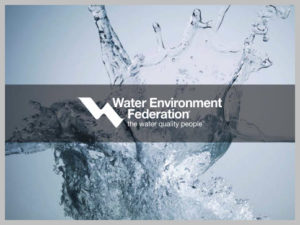
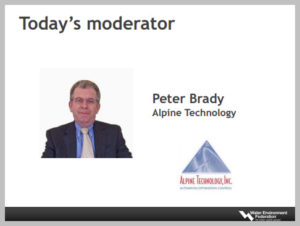
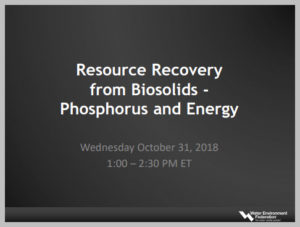
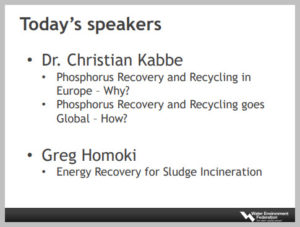
Included are two fluid bed sludge incinerators
Alpine Technology’s principals, CPPE, EnviroCare International, and Schmidtsche Schack, provided information to Black & Veatch, the owner’s consultant, regarding this project.
We are interested to support bidders for emission control and energy recovery equipment.
Here is a project overview;

